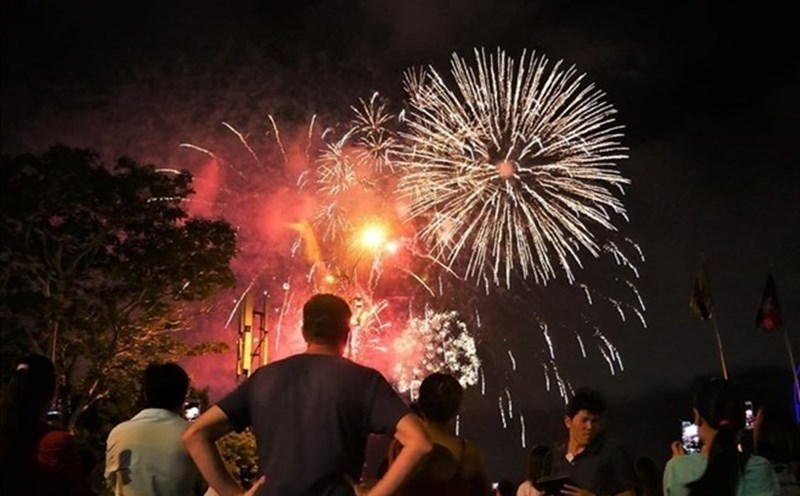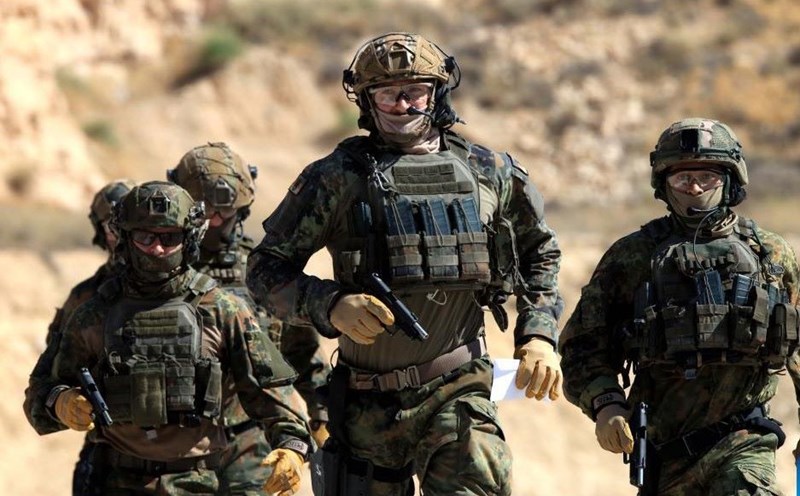Having lived in Hanoi for a long time, but it was not until August 18 this year, when the City Party Committee, People's Council, People's Committee, and Vietnam Fatherland Front Committee of Hanoi organized the installation of a plaque to celebrate the 80th anniversary of the August Revolution, National Day September 2 and recreated the historical space for the relic of 48 Hang Ngang that Ms. Nguyen Thu Huong (Dong Da Ward - Hanoi) visited the Revolution House for the first time. Nearly 80 years have passed, but the heroic memories associated with this special house are always awakened and spread, becoming a destination rich in historical and cultural values right in the heart of the capital.
I feel very impressed. The house at 48 Hang Ngang is not just a simple historical site but is also recreated with a series of modern technologies, helping visitors feel the revolutionary spirit here," Ms. Huong shared.
Indeed, with the presence of new technologies, today's generations have partly felt the flow of time, changes, and moments that have passed for a long time in history. The technologies installed at 48 Hang Ngang such as scientific exhibition, application of Mapping technology, virtual reality VR, holograms... are just one of a series of new technologies, created to help preserve and restore unique relics, heritages or works of art of the ancients.
Running back in time
When standing in front of a restored heritage, people often feel like they are touching history. That is the moment that the past and present meet, when a painting that was once gloomy due to dust returns its brilliant color, or when a cracked ancient statue is recreated in its original shape. That feeling not only brings surprise but also arouses pride and a sense of appreciation for heritage.
Visual art is a typical example. No matter what painting is made from oil paint, tempera or durable material, it cannot escape damage. Many works were covered with dust, smoke, were turned yellow by vecni, and even eaten by mold. Therefore, the restoration work is not simply a cleanup, but a journey to find the origin. By comparing with other works of the same period, using research data and comparing artist style, restoration experts can make the most accurate decision to restore the work's most realistic form.
A typical example in the application of technology is at the Chicago Institute of Art, when it was necessary to authenticate West African Bankoni terracotta statues, conservationists collaborated with the Pritzker School of Medicine at the University of Chicago to use CT scans. Thanks to this medical technology, they can "see through" the internal structure, detect cracks, connective layers or signs of damage that are not seen with the naked eye. That approach saves costs and avoids risks for the work.
Or the case of "Self-art" by Paula Modersohn-Becker in 1907. When discovering a hole in the painting, experts used a medical examiner to patch each fabric without removing the painting from the original frame. The seemingly impossible work has become feasible thanks to human patience combined with modern observation technology.
For the paintings with the sketch below, the restoration also has the meaning of exploration. With infrared technology, people can see the original drawings, thereby better understanding the artist's creative intention. That is how the past is recreated, not only in its external form but also in its spiritual depth.
It can be said that each successful conservation project is like a revival. It not only helps heritage prolong life but also creates a spiritual bridge between generations.
The participation of AI technology
While image scanning or cleaning technology has helped the restoration process become more accurate and safer, the appearance of artificial intelligence has opened up a completely new direction. AI is not only a tool for scientific research, finance, education or health, but also becomes a partner in the field of heritage conservation.
In reality, AI is increasingly present in life. We are familiar with ChatGPT or Google Gemini, systems that can provide information and natural dialogue. But there are hundreds of thousands of other AI models, each model takes on a specialized task and serves a separate group of users. Among them, there are AIs that are specially trained to analyze, monitor and support the preservation of antiques, works of art as well as architectural heritage.
The greatest power of AI lies in its ability to process huge volumes of data and detect details that are difficult to recognize with the human eye. When applied to conservation, that means AI can review millions of photos of relics, compare 3D scans or analyze environmental data to identify early signs of deterioration. A small crack on a church wall, color changes in a painting or the risk of erosion from climate can be detected and warned by AI before becoming serious.
AI also helps create "digital copies" of heritage. By synthesizing hundreds of thousands of images and historical data, AI creates 3D models that are every inch accurate. These models are not only used for online sightseeing but also allow experts to experiment with recovery options, even simulating the impact of earthquakes, strong winds or climate change. Thanks to that, preservation has shifted from the mindset of "treatment" to "prevention", helping to prepare future response scenarios.
Another notable point is the ability to restore severely damaged works. With thousands of pieces of debris from an ancient mural or statue, people once considered this an impossible problem. But with AI, each piece of broken pieces is analyzed, compared in shape, color and material, then the automatic algorithm proposes how to join. This process is like a giant simulation game, but faster, more accurate, and opens up opportunities for works that seem to be lost.
Not stopping there, AI has also become a global monitoring tool. By combining with satellite data, AI systems can track the status of heritage everywhere, from the desert to coastal areas. When detecting risks such as erosion, desertification or impacts from conflicts, AI will issue warnings, creating a basis for timely solutions. This is a strategic step forward, helping heritage to be protected even when people cannot be present on the spot.
It can be said that AI is fundamentally changing the concept of conservation. If this work was previously mainly the treatment of post-damaged diseases, now, with the support of AI, conservation has become a science of prediction and prevention. Thanks to that, the heritage is not only preserved to this day but also has the opportunity to continue for centuries to come.
Heritage is the voice of history, a common memory that humanity leaves to each other over time. Therefore, heritage conservation is not only about preserving the external form, but also preserving the soul, story and identity of an entire community. In that journey, technology and artificial intelligence are becoming important allies.











